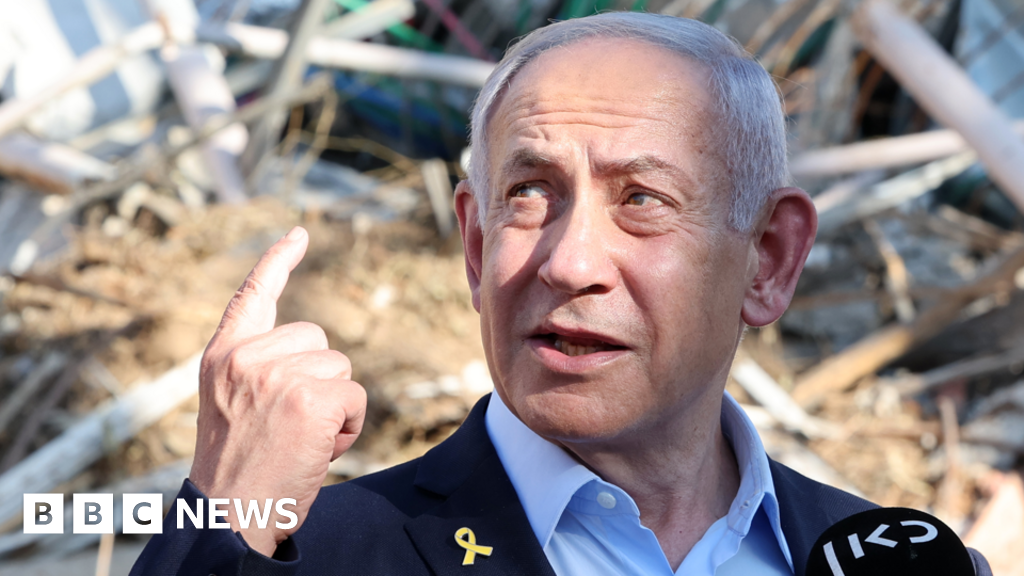Israel's hollow victory
Meanwhile, Netanyahu’s long-held dream of a joint Israeli-American regime change war on Tehran came tantalisingly (or terrifyingly) close, but has so far failed to materialise. The Iranian regime appears, for now, to be emerging more entrenched and more repressive. Iran retains much of its ballistic missile arsenal, including some of the heaviest payloads. And even if its nuclear programme has been damaged to the extent claimed by Israel and the US – a highly contested assessment – the incentives for Iran to pursue a nuclear weapon, if only as a deterrent, have increased. In other words, all of Netanyahu’s original motivations for the war remain in play, in some ways more acutely than before – now coupled with the dangerous suggestion (perhaps misleading) that Israel can indeed survive a war that was once deemed apocalyptic.
Subscribe to The New Statesman today from only £8.99 per month
Still, it is obvious that Netanyahu is aware that Israel accomplished all it could on its own, and that the momentum for open-ended American involvement in the conflict appears to have hit a ceiling – as have, reportedly, at least some of Israel’s interceptor missiles, which would mean the loss in property and lives in Israel would only grow if the war escalated. And the ceasefire with Iran could collapse at any moment – for instance, by some faction of Iran’s military apparatus retaliating (unlikely) or by Israel assuming it has the same freedom of action in Iran as it does in Lebanon, where it has continued to stage pinpoint air-raids and assassinations at will, despite the ceasefire being still in force (more likely).
But assuming the ceasefire holds, Netanyahu now faces a number of choices: does he use the momentum of the paradigm shift to hold a snap election to secure power until at least 2029? And does he attempt to finally convert Israel’s tactical military wins into a sustainable diplomatic infrastructure? Or does he attempt to instigate a new round of fighting with Tehran, this time aiming to drag America in all the way?
Calling a snap election now – instead of waiting for the mandatory election year of 2026 – would force Netanyahu to confront the apparent crumbling of another paradigm. It is usually believed that in times of war, Israelis rally behind institutions and leadership, prioritising national unity over political disagreements. Few things can boost a leader’s popularity more than a successful war.
Yet this belief might soon be discarded too. The public has rallied behind some institutions and leadership figures: in the first week of the war, a survey by the Institute for National Security Studies at Tel Aviv University found that trust in the army went up from 75 per cent to 82 per cent, trust in the Air Force from 71 per cent to 83 per cent and trust for Israel’s Intelligence Corps from 61 per cent to 74 per cent. Trust, meanwhile, in Chief of Staff Eyal Zamir from 56 per cent in May to 69 per cent in June.
But trust in Netanyahu’s government only went up by eight points – from 21 per cent to a miserly 29 per cent. Netanyahu himself did a little better, going from 26 per cent in May to 35 per cent as the war started. In another survey by pollster Agam Labs, the war cabinet and the government ranked lowest on a scale of trust from 1 to 6 (at 2.18 and 1.73, respectively), while Netanyahu himself scored a dismal 1.54, only slightly more trusted than the most extreme far-right figures in his cabinet, Bezalel Smotrich (1.46) and Itamar Ben Gvir (1.24).
Far more consequentially for the question of snap elections, polling done for Israel’s Channel 12 News found that while Netanyahu’s Likud party would gain four extra seats compared to pre-war surveys – remaining the largest party at 26 seats – these seats would likely be won at the expense of Ben Gvir and Smotrich, whose support Netanyahu still needs, than any opposition party. The all-important “bloc” calculation remains the same: if elections were to be held this week, the parties that currently make up the coalition would only get 49 seats out of 120, while the opposition parties – even discounting the Palestinian-majority parties almost invariably excluded from coalition agreements – would get at least 61, meaning the next prime minister would not be Benjamin Netanyahu.
In a way, this would be a fitting coda to Netanyahu’s lifelong attempt to cast himself as the new Winston Churchill in a fight against (in his imagination) Iran’s Nazi Germany. After all, Churchill, who led a much more convincing victory in World War Two, lost the premiership to Clement Attlee immediately thereafter.
But there is also a third scenario, hinted at by the leak – and the reactions to it – of the ambitious peace deal concocted by Trump and Netanyahu to end the war much more conclusively. According to the leak, revealed by the unwaveringly pro-Netanyahu Israel Hayom newspaper and not denied by the prime minister, the war in Gaza would wrap up within two weeks. The hostages would be released, the surviving leadership of Hamas would go into exile, and a group of states worldwide would offer visas and asylum to Gazans willing, in a cynical sense of the word, to emigrate. Four Arab states, including Saudi Arabia and the UAE, and two yet to be disclosed, will take up governance and reconstruction of the Gaza Strip. Saudi Arabia, Syria and other states would then join the Abraham Accords, normalising relations with Israel. For its part, Israel will acknowledge some openness to a two-state solution – pending some unspecified “reforms” to the Palestinian Authority, which all sounds like the palest possible imitation of statehood for Palestinians. In exchange, the United States will recognise a degree of Israeli sovereignty in the West Bank, though it remains unclear whether this would be structural or symbolic..
To anyone genuinely interested in securing Israel’s uncontested and permanent control over historic Palestine, along with regional pre-eminence and acceptance by other Middle East countries, this “peace deal” is a dream come true. But to those committed to Israel’s own version of “from the river to the sea” – total annexation with maximum expulsion of Palestinians – this represents a historic opportunity squandered (Smotrich has already denounced the report, telling Netanyahu he has no mandate to negotiate for any kind of Palestinian state).
This creates an opening for Netanyahu to revert to a far more familiar pattern than the past 20 months of relentless escalation. If reports of the deal are accurate, and if the other putative parties are genuinely willing, the prime minister could afford to discard Smotrich and Ben Gvir and instead invite the centre-right opposition parties into government – Yair Lapid, Benny Gantz, and even Avigdor Lieberman. This would not only reconstitute a more traditional Netanyahu coalition – one in which he plays centrists and right-wingers against each other, tacking with the political winds rather than remaining bound to a rigid ideological course – but also allow him to enter the 2026 election year as both a successful war leader and a peacemaker.
Best of all, from Netanyahu’s perspective, is that he would then have both the mandate and the timeframe to finalise his authoritarian reforms – from politicising the judiciary to effectively strangling civil society. He would also gain, at the very least, four more years in which to launch a second war with Iran if necessary – and this time, ensure that America is fully dragged in to fight it all the way to the end.












